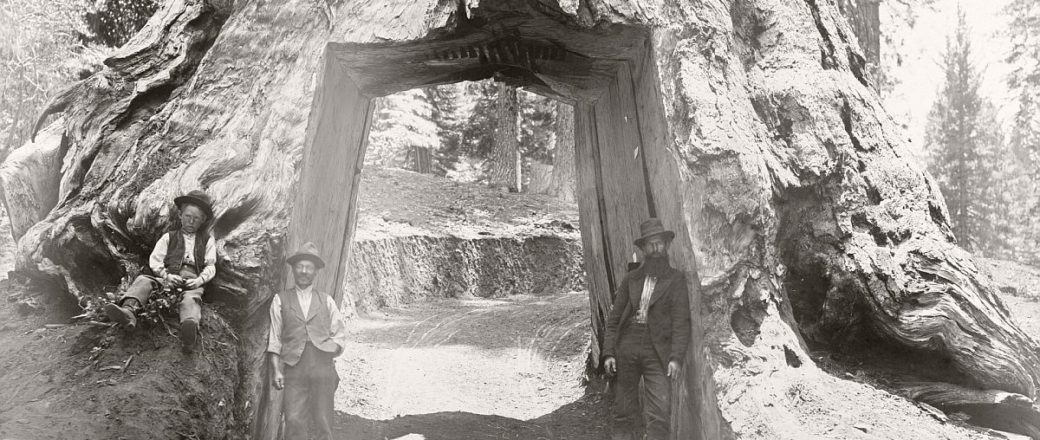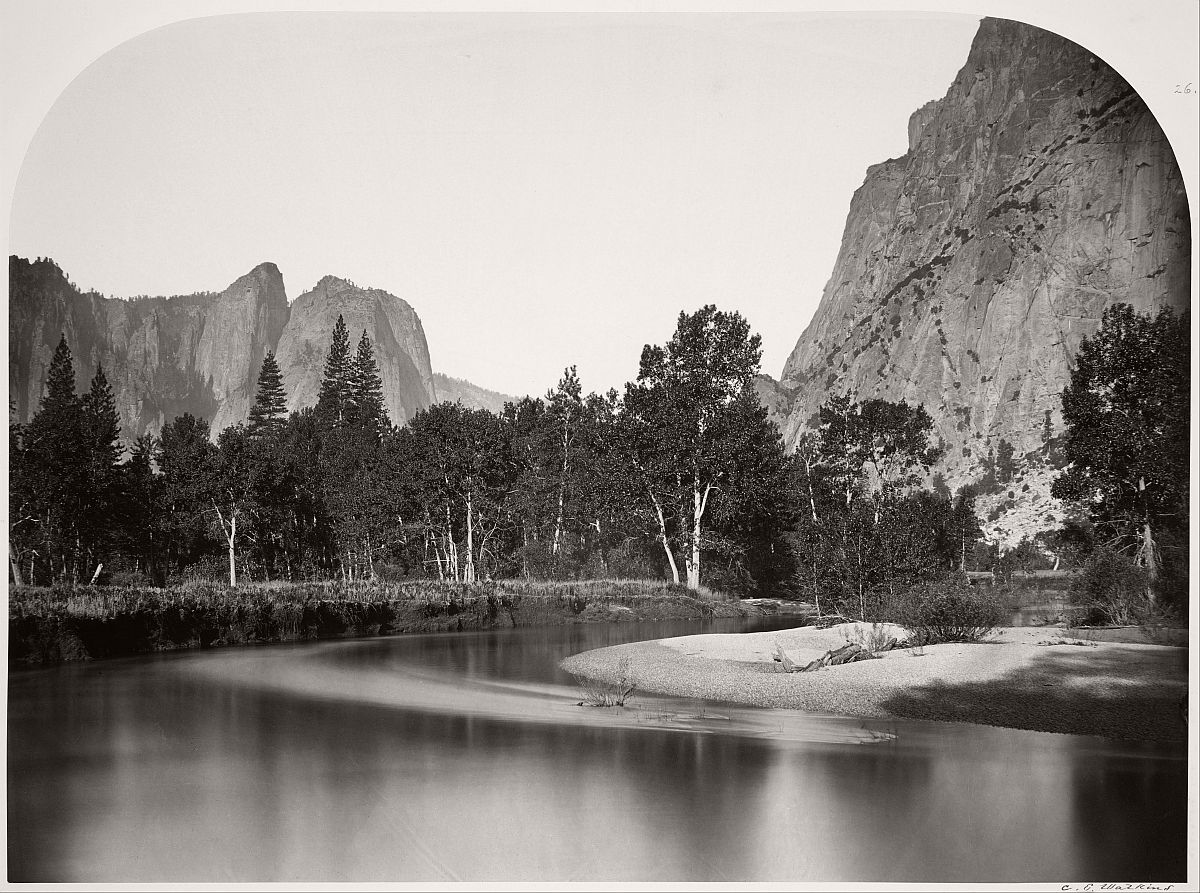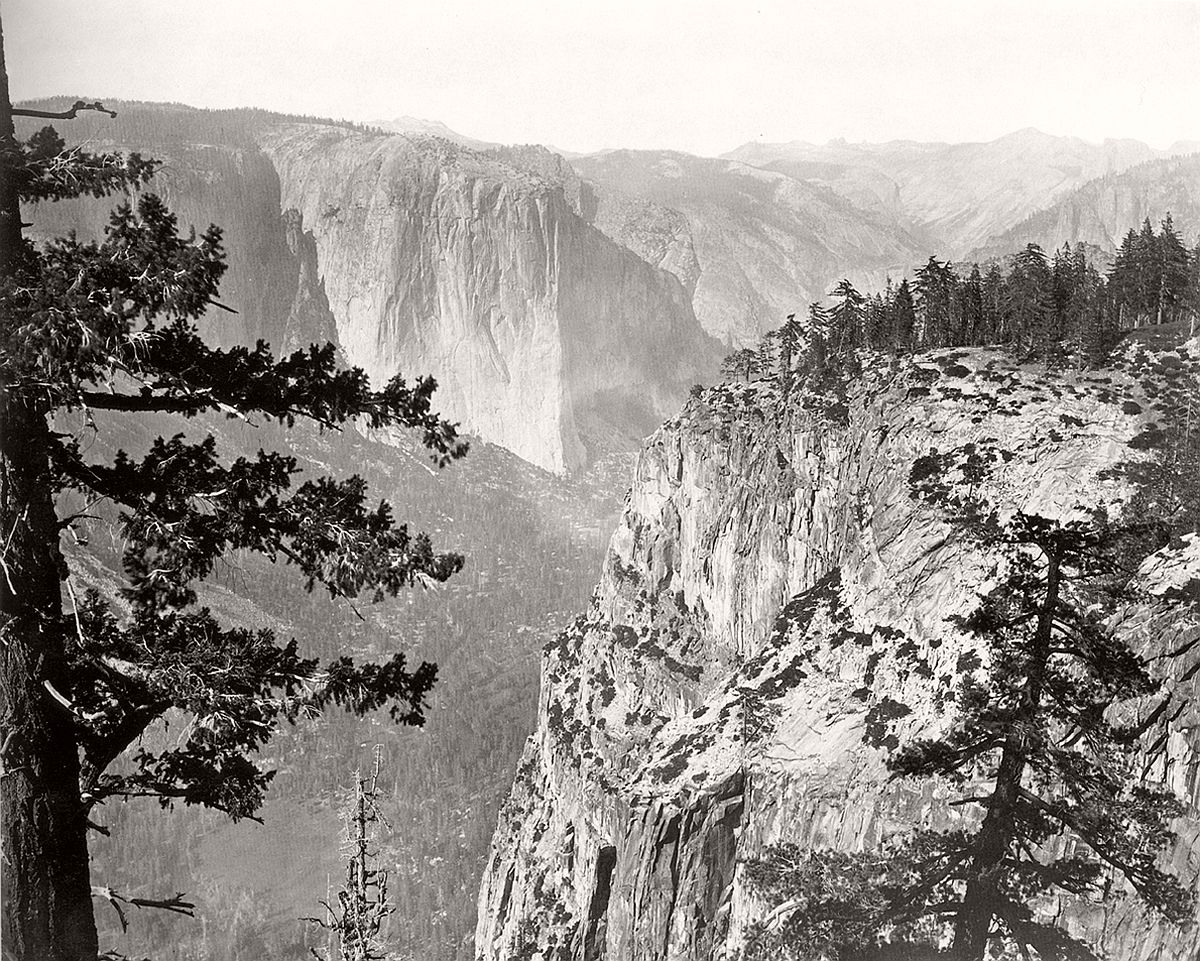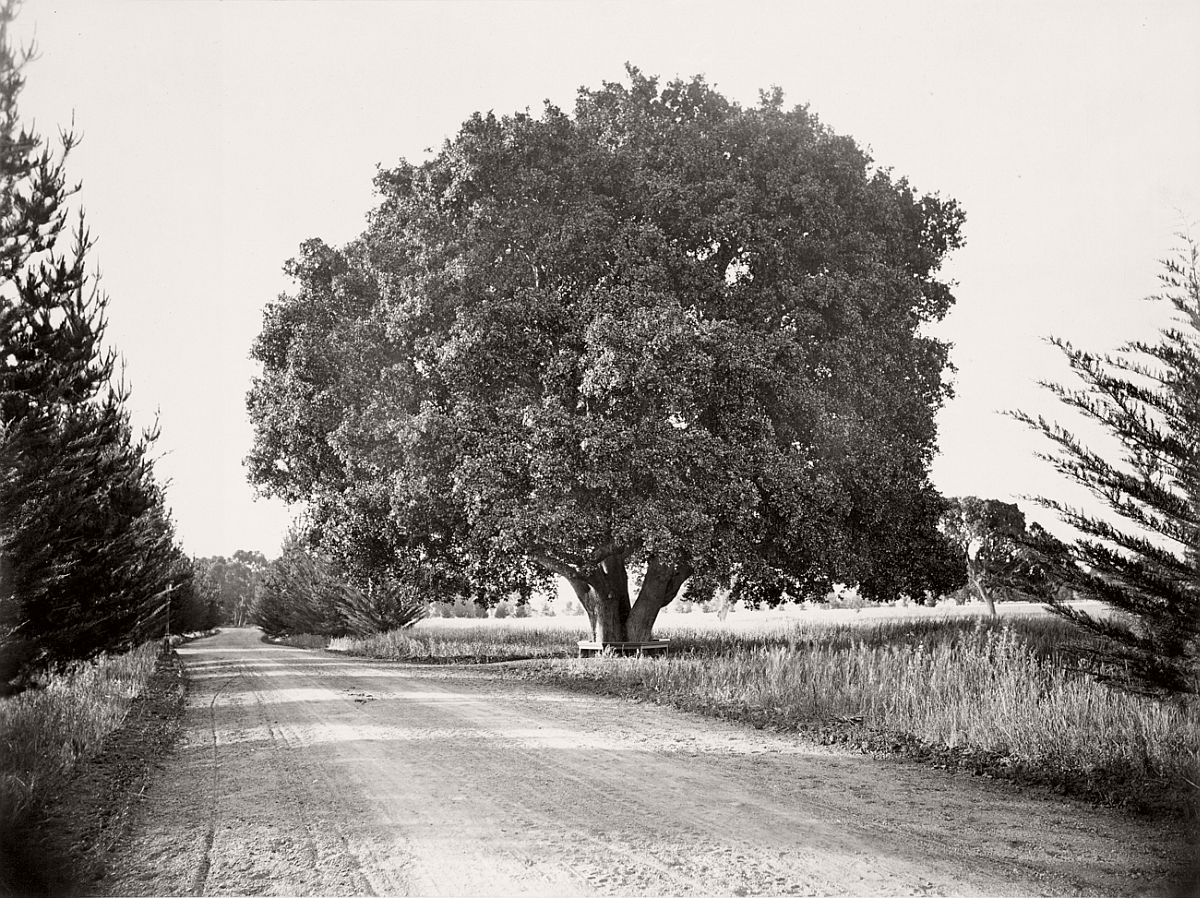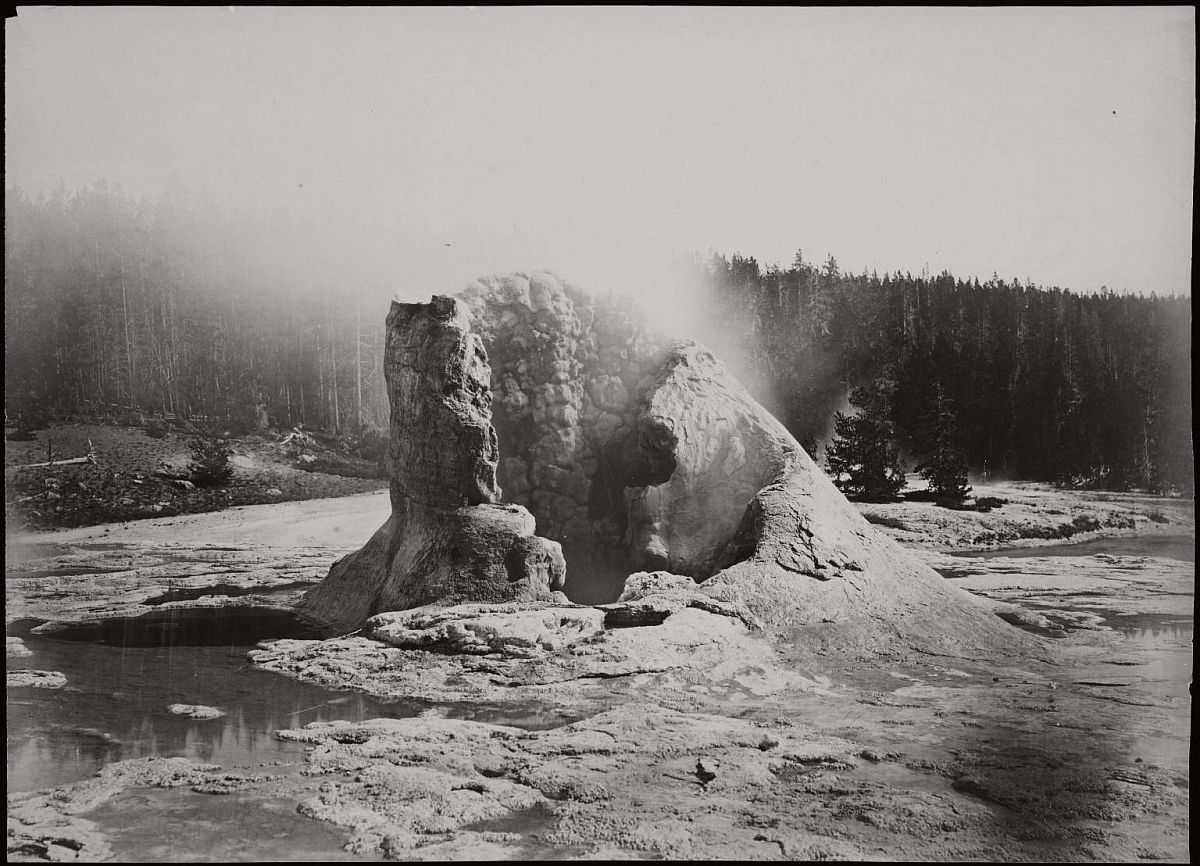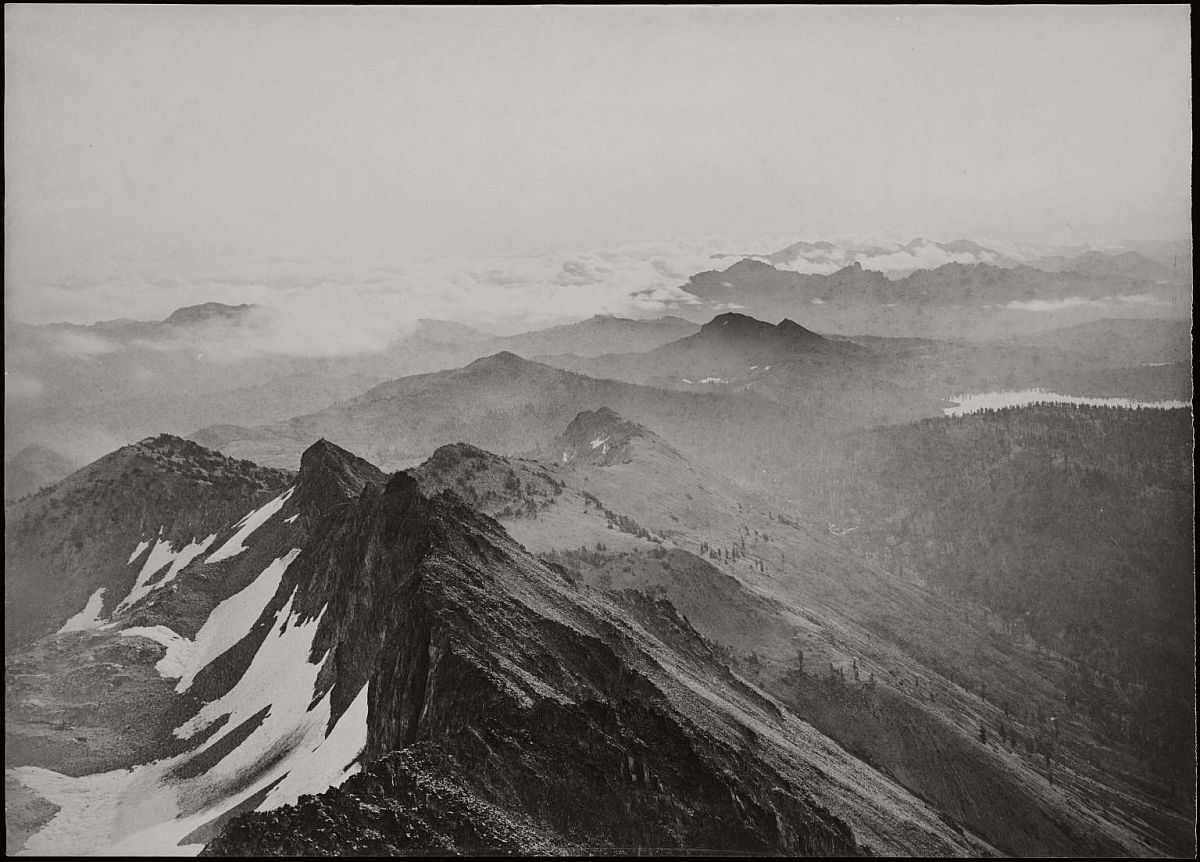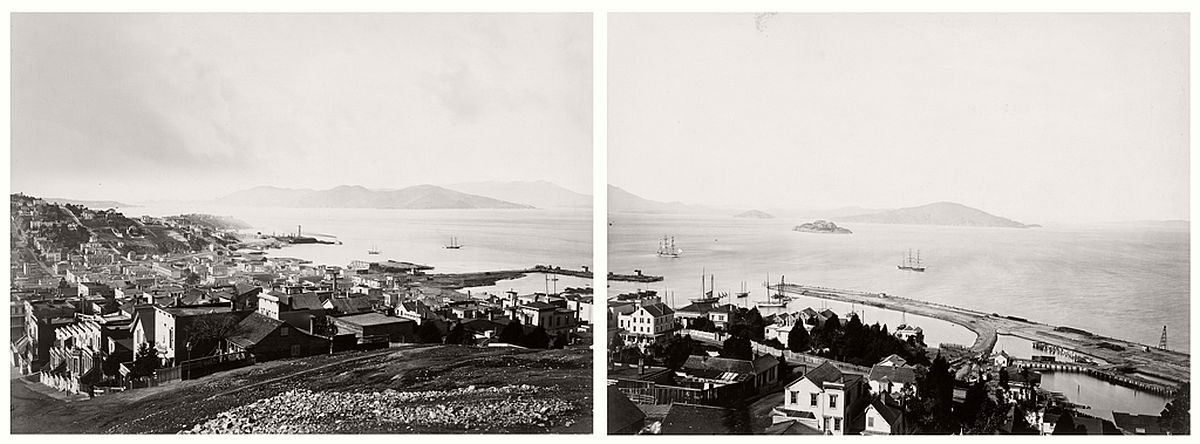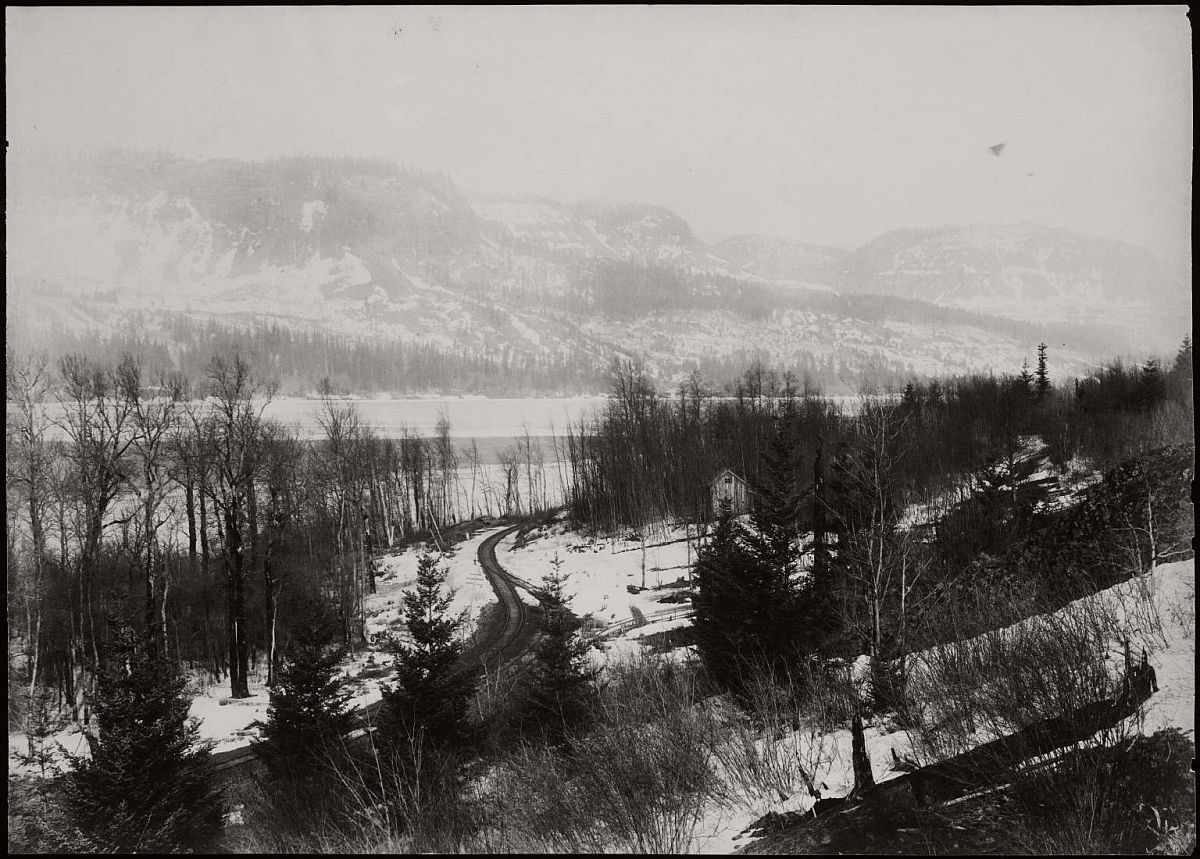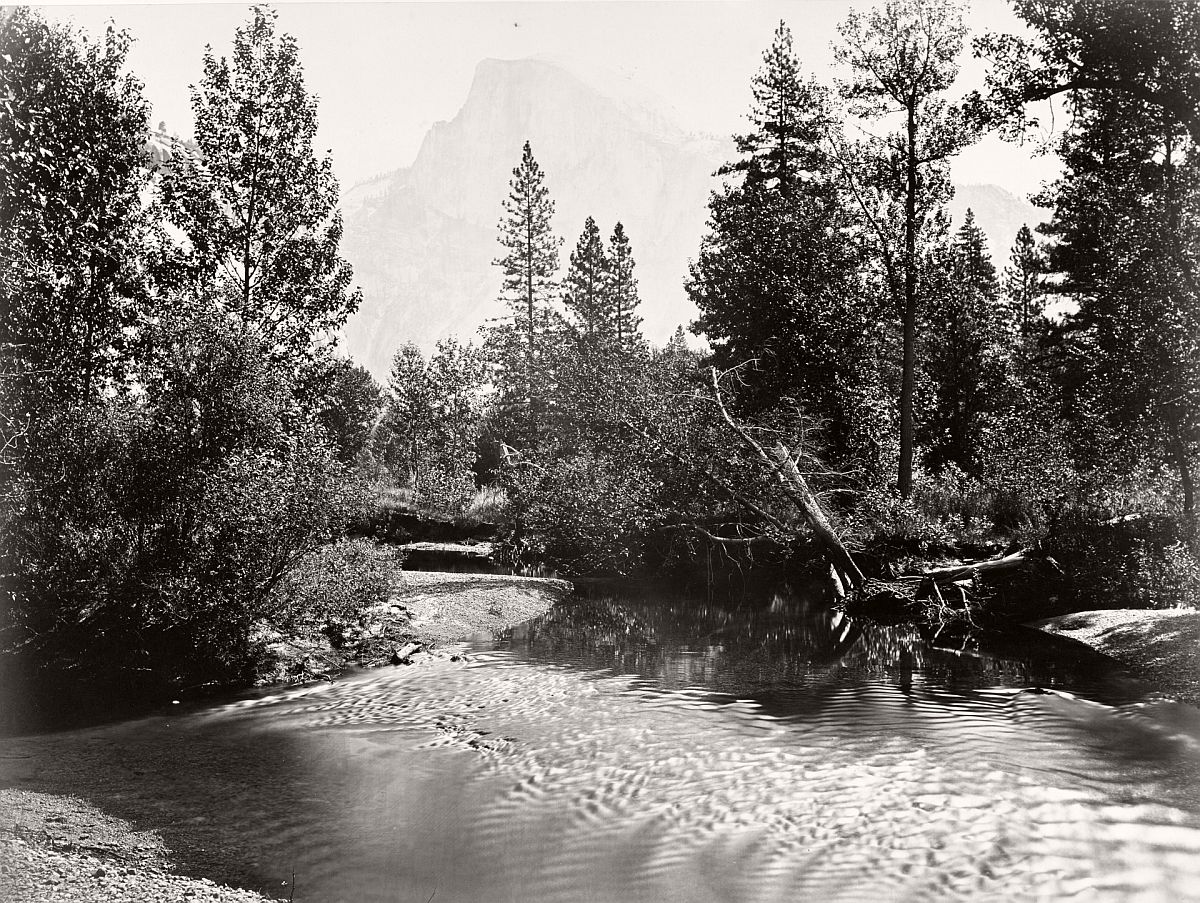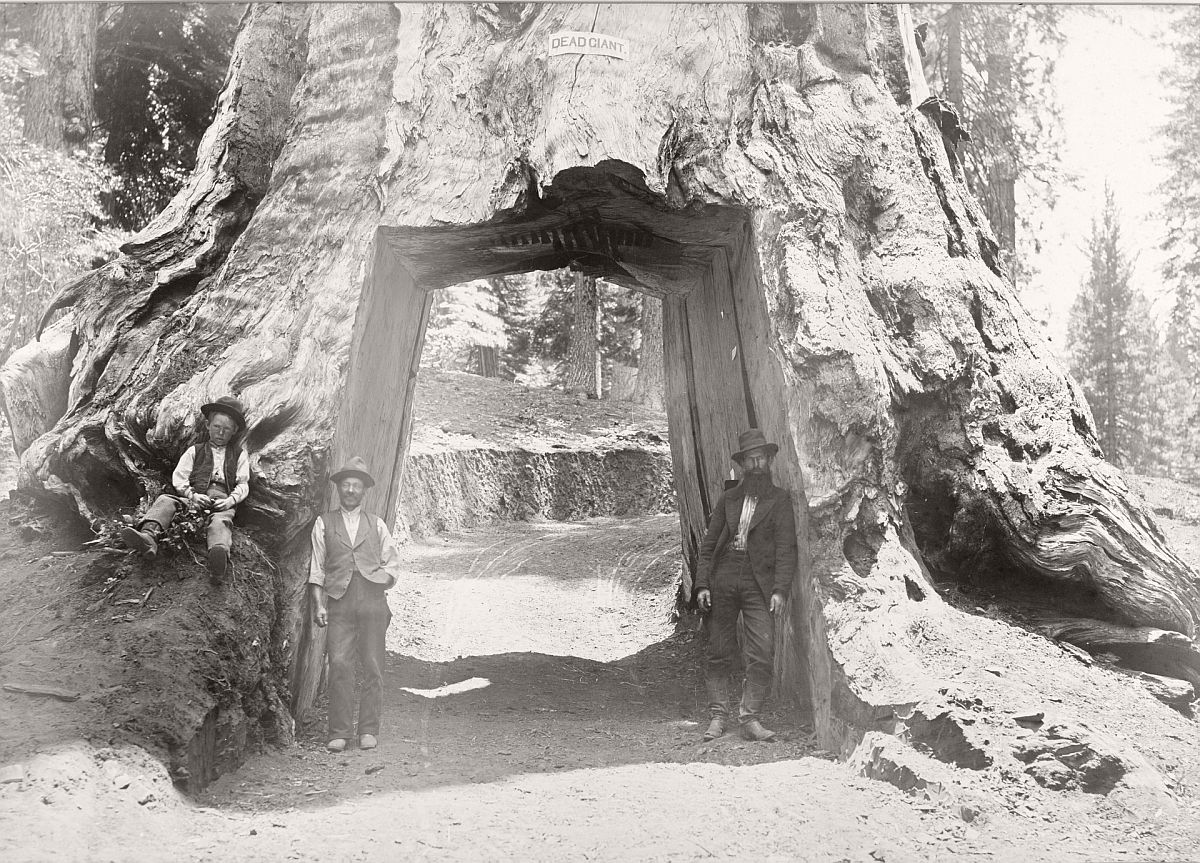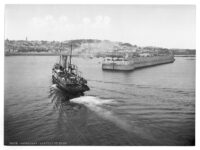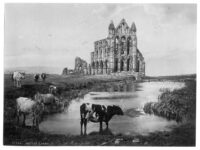Carleton E. Watkins (1829 – 1916) was a noted 19th-century California photographer.
Carleton E. Watkins was born in New York in 1829, and moved to San Francisco around the beginning of the Gold Rush in 1851/2. From the age of twenty-five he was taken on as an apprentice in a portrait studio. He became interested in landscape photography and experimented with different methods of photography and found that wet-plate negatives were the most suitable for his work since numerous prints could be made from each negative.
Watkins also realised the immensity of the landscape would not be captured effectively enough with a normal camera, and so in 1861, he commissioned a special camera to be built with which he could make mammoth-sized negatives (ca. 45 x 55 cm.) and began to use it that year in a trip to what would become later the Yosemite National Park in the Sierrra Nevada Mountains, California. In fact his photographs in Yosemite contributed to the decision of the US Congress to set the area aside for public use and protection in 1864.
While on these trips, he generally used two or three cameras, mainly the mammoth and the stereoscopic. A stereoscopic camera produces two photographs, the same distance apart as eyes (ca. 5 cm.), so that each eye sees a different image. These stereoscopic photographs, when viewed through a special viewer, can give the impression of three dimensions.
It was reported that in his 1861 expedition to Yosemite, Watkins took ‘mammoth camera (about thirty inches on a side and at least three feet in length when extended), stereoscopic camera, tripod(s), dark tent, glass (stereo as well as mammoth size), chemicals and processing trays, numerous accessory photograph items, plus sufficient camping provisions for a sojourn of several weeks in the valley.’
This equipment had to be carried over precarious tracks, up mountains, along passes and down valleys in rough, relatively unexplored terrain, on the backs of mules. It is almost incomprehensible to imagine the struggle to balance the need to take as many glass plates as possible for photographing, and the lack of space and cumbersome nature of the mammoth plates themselves.
On his later journeys Watkins used the new rail system to his advantage, by producing publicity photographs for the railway companies in exchange for annual passes, and in 1873 he began travelling in two railroad cars, housing his equipment in one, and the animals needed to transport the party to the more remote locations to be photographed in another.

